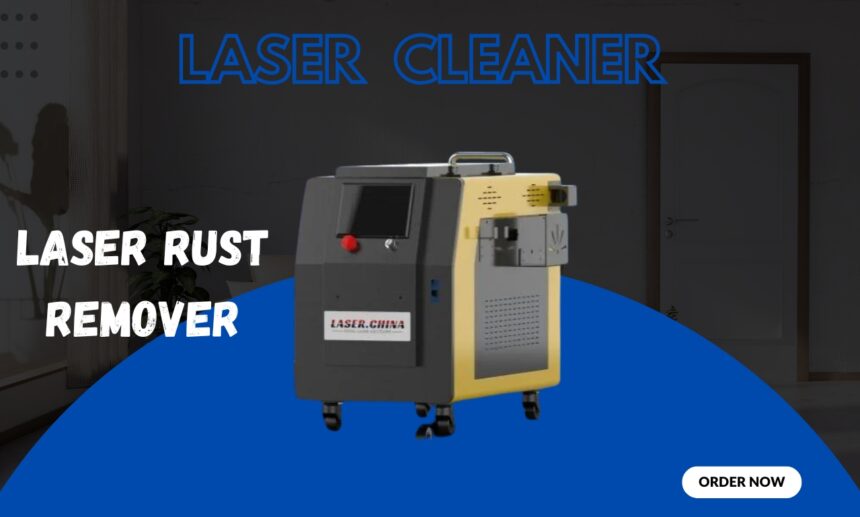The handheld fiber laser welder has become a revolutionary tool in the welding industry, offering advanced technology that delivers precision, versatility, and efficiency. Compared to traditional welding methods like TIG (Tungsten Inert Gas) or MIG (Metal Inert Gas), handheld fiber laser welders bring several advantages that make them the preferred choice for modern industrial and commercial applications. Below, we’ll discuss the key benefits and comparisons to traditional welding techniques.
1. Precision and Superior Weld Quality
A handheld fiber laser welder produces highly precise and clean welds due to its focused laser beam technology. This precision allows for smooth and seamless joints with minimal spatter or imperfections. In comparison, traditional welding methods like TIG or MIG can leave welds that may require additional grinding or polishing for a finished appearance. This is particularly advantageous in industries like aerospace, automotive, and electronics, where weld quality is critical.
Fiber laser welders also allow for micro-welding, enabling intricate and delicate work that is nearly impossible with traditional methods.
2. Speed and Efficiency
Handheld fiber laser welders are significantly faster than traditional methods. The concentrated laser beam melts the material quickly, reducing welding time without compromising quality. In comparison, TIG welding, while precise, can be time-consuming and labor-intensive. MIG welding, though faster than TIG, may not provide the same level of precision as a laser welder.
The increased welding speed not only boosts productivity but also reduces labor costs, making fiber laser welders a more efficient solution for high-volume applications.
3. Versatility Across Materials and Thicknesses
One of the standout features of a handheld fiber laser welder is its ability to work with a wide variety of materials, including stainless steel, carbon steel, aluminum, copper, titanium, and even dissimilar metals. This versatility is a significant improvement over traditional welding methods, which often have limitations with certain materials or combinations.
Additionally, fiber laser welders can handle varying material thicknesses, from ultra-thin sheets to thicker components, providing flexibility in different welding applications.
4. Minimal Heat Distortion
Traditional welding methods, particularly MIG and TIG, generate significant heat, which can lead to material warping, cracking, or distortion. Handheld fiber laser welders, however, use a concentrated heat zone that minimizes thermal impact on the surrounding material. This makes them ideal for delicate or thin materials where precision is crucial and heat distortion must be avoided.
5. Ease of Use and Portability
Handheld fiber laser welders are designed to be user-friendly and ergonomic. Unlike traditional welding machines, which often require extensive training and experience, laser welders are easy to operate with minimal training. They also come with intuitive control systems, allowing operators to adjust power, speed, and other parameters based on the material and application.
The portability of handheld fiber laser welders adds another layer of convenience. They are lightweight and compact, making them easy to transport to different job sites, which is especially beneficial for on-site repairs or construction projects.
6. Cost Savings in the Long Run
While the initial investment for a handheld fiber laser welder is higher than that of traditional welding equipment, the long-term cost savings make it a worthwhile choice. The reduced need for consumables, such as welding rods and shielding gases, lowers operating expenses. Additionally, the faster welding speeds and minimal post-weld cleanup reduce labor costs.
Traditional welding methods, in contrast, often have higher ongoing costs due to consumables, additional finishing, and slower production speeds.
7. Environmental Benefits
Handheld fiber laser welders are more environmentally friendly compared to traditional methods. They produce less waste, require fewer consumables, and have lower energy consumption. Additionally, their minimal need for post-weld cleanup further reduces energy and material waste, aligning with sustainable manufacturing practices.
8. Enhanced Safety
Fiber laser welding machines are safer to use than traditional methods, as they produce less smoke, spatter, and harmful emissions. Their precise laser beam also minimizes the risk of accidents, as there is less chance of damaging nearby components or materials.
Conclusion
The handheld fiber laser welder is a game-changer in the welding industry. Its precision, speed, versatility, and long-term cost-effectiveness make it a superior alternative to traditional welding methods. Whether working on intricate, high-precision projects or large-scale industrial applications, fiber laser welders offer unparalleled benefits. As industries continue to demand higher productivity and cleaner welding processes, handheld fiber laser welders are set to become an essential tool for professionals worldwide.


